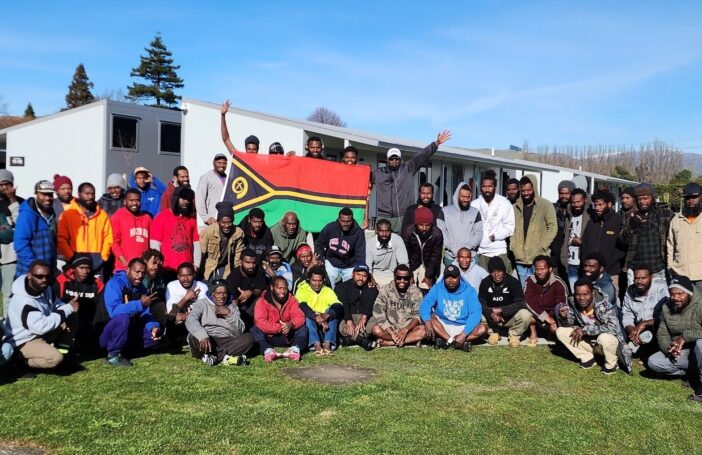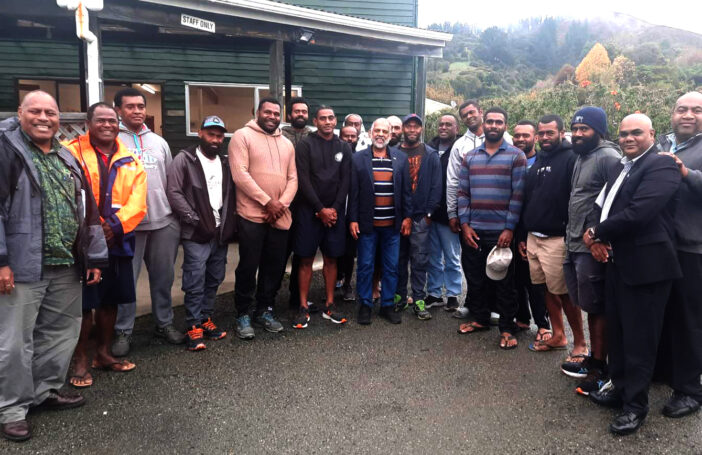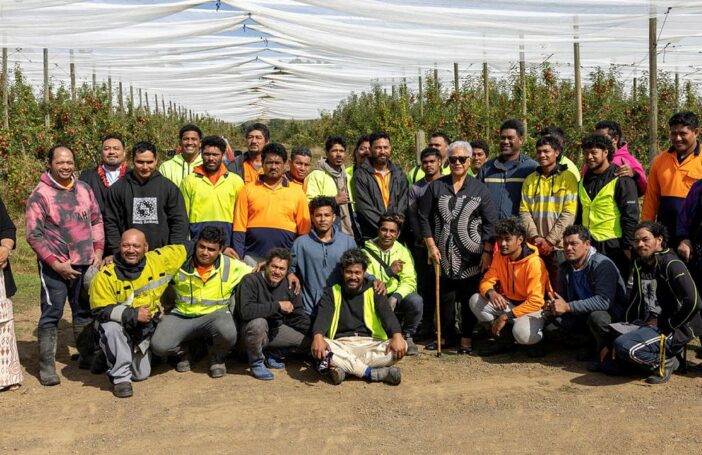In June 2025, the Samoan Ministry of Finance introduced employer fees for recruitment of Samoan workers under Australia’s Pacific Australia Labour Mobility (PALM) and New Zealand’s (Recognised Seasonal Employer) RSE schemes. Employers are to pay A$50 and NZ$50 respectively, for each worker mobilised.
For RSE employers that recruit from Samoa, the fees are not insignificant. 36% (63) of the 177 RSE employers who recruited labour during the 2024-25 financial year sourced workers from Samoa, bringing in a total of 3,798 workers. At NZ$50 per worker, that equates to NZ$189,000.
While many RSE enterprises recruit relatively small numbers from Samoa — 70% (44) of the 63 RSEs had fewer than 50 Samoan recruits each during 2024-25 — the two largest RSE employers collectively bring in over 1,000 Samoans. These two employers are, in turn, looking at fees of approximately NZ$34,150 and NZ$18,600, assuming both employers recruit the same numbers from Samoa in 2025-26. With the employer fee payable each time a Samoan RSE worker is mobilised — and with a maximum 7-month validity on the RSE visa — employers will be paying the fee every year.
Data are not available on PALM employers’ recruitment of Samoan workers by financial year. However, according to the Australian Department of Employment and Workplace Relations’ most recent PALM scheme data, there were 2,505 Samoan workers in-country in June 2025. If the fee had applied to each of them, that would have equated to A$125,250.
For employers recruiting Samoan workers under the short-term component of the PALM scheme, with a maximum nine-month visa, the cost burden will be similar to that borne by RSE employers — that is, they will pay the fee every year. For long-term PALM employers, the payment of fees will be less frequent as workers mobilise on visas valid for up to four years.
Samoa’s Policy for Temporary Labour Migration, endorsed in 2023, outlines the introduction of employer fees as one of several cost-recovery measures to be implemented by the Samoan Labour Sending Unit, which manages the Labour and Employment Export Program (LEEP), to support the administrative functions associated with recruiting and mobilising PALM and RSE workers.
Under the policy, PALM and RSE workers will also be subject to an administrative fee of WST$50. Constituency Committees, which now play a key role in the selection and vetting of worker candidates under Samoa’s shift to a district-led recruitment model, will pay a participation fee of WST$1,000. It is unclear whether, at this stage, the worker and Constituency Committee fees have actually been introduced.
Samoa is the second-largest source country of RSE workers, behind Vanuatu. Between 2008 and 2024, 10,660 Samoan individuals participated in the RSE scheme, accounting for 30,400 visa-holding arrivals over the same period. During the pandemic, Samoa was one of the few Pacific countries included in the New Zealand government’s border exceptions, which allowed for the entry of RSE workers as essential employees. This resulted in more RSE employers’ recruiting from Samoa than had previously done so pre-pandemic, and an influx of Samoan recruits into New Zealand.
When New Zealand’s borders re-opened in 2022-23, 4,167 Samoans were recruited; an 80% increase on the 2,315 Samoans recruited in 2018-19 (Figure 1).

The spike in demand for Samoan RSE workers during and in the aftermath of the pandemic was matched by a significant increase in Samoan participation in Australia’s then Seasonal Worker Program, now known as the short-term PALM stream (Figure 1). Over 6,000 Samoans were employed as seasonal workers across the RSE and short-term PALM schemes in 2022-23, double the number recruited in 2018-19. It was the much larger outflows of Samoans leaving for temporary work in New Zealand and Australia that prompted the Samoan government’s review of their labour mobility policy.
As recruitment from Samoa has increased, so too has the administrative burden for the LEEP. The Australian government presently funds several LEEP staff to assist with PALM worker mobilisations via DFAT’s large-scale Pacific Labour Mobility Support Program. In New Zealand, there have been discussions about the provision of an additional staff resource to assist with RSE worker mobilisations through MFAT’s (much smaller) Strengthening Labour Mobility Program.
According to the Samoan Ministry of Finance, the introduction of employer fees is aligned with Samoa’s commitment to “support strengthened governance and coordination of recruitment operations in Samoa, improve the quality, efficiency and compliance of administrative processes to support mobilisation of Samoan workers, and maintain a high standard of service delivery through the LEEP”.
RSE employers are seeking more information on what the NZ$50 fee will cover, what service(s) the LEEP aims to provide for the fee and how the fee will lead to greater efficiency and accountability of LEEP operations. Transparency and safeguards in relation to fee collection and funding utilisation are also of interest.
Many RSE employers recruit their Samoan workers directly through well-established village and community relationships, some of which have now been in place for almost 20 years. The LEEP’s administrative role in these direct recruitment relationships tends to be limited — in some instances, the LEEP’s sole function is to lodge the RSE visa application with Immigration New Zealand. By contrast, for the PALM scheme LEEP staff might handle all aspects of worker selection, recruitment, vetting and application processing. The question then arises whether there should be a differential fee structure for employers based on the level of input by LEEP staff, rather than a flat fee.
Over the last two seasons (2023-24 and 2024-25), recruitment of Samoan RSE workers has more or less plateaued at around 3,800 workers. The drop in numbers from the peak of 4,167 in 2022-23 likely reflects a post-COVID rebalancing in recruitment, with some RSE employers reverting to other source countries as borders opened again, perhaps responding to Samoa’s concerns around “brain drain” and also shifting their recruitment strategies to lessen operational risks.
Samoa is not the first country to introduce employer fees. Vanuatu and Solomon Islands both use an agent-based recruitment model for the RSE scheme, and employers pay a fee per worker. RSE employers are not opposed to Samoa’s implementation of a fee. However, its introduction comes at a time when employers have already voiced strong concerns about the increasing costs of RSE participation. Looking ahead, for small and large recruiters from Samoa alike, the new fee may well contribute to a further shift in recruitment to other source countries, as employers seek to minimise their operational costs.




